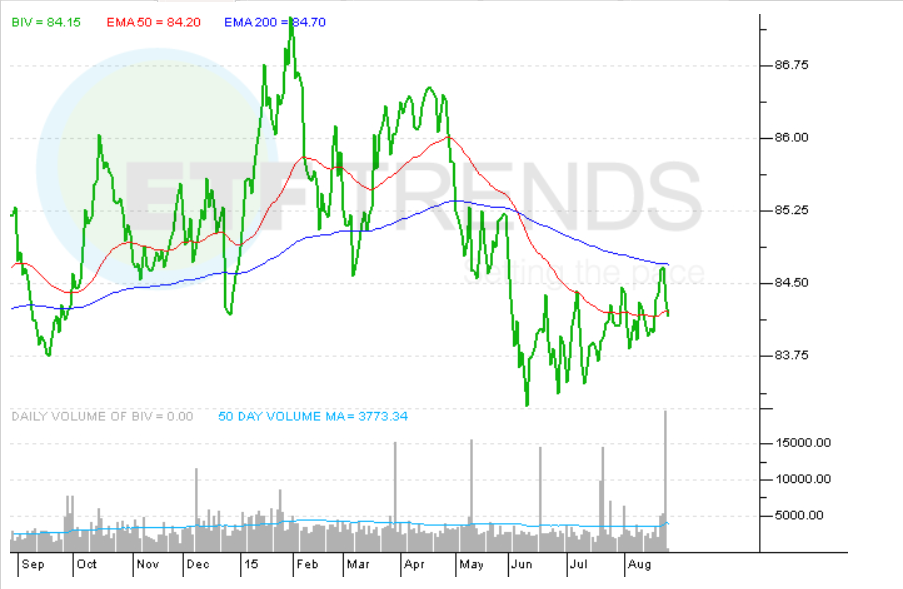A Fine Idea Among Diversified Bond ETFs
Aggregate or total bonds refer to a range of securities, such as convertible, floating-rate, foreign, high-yield tax-exempt munis and inflation-protected bonds. Investors are finding the low costs of bond exchange traded funds even more attractive because they don’t want fees to cut into returns in a low-yield environment for fixed-income markets.
For example, Vanguard Total Bond Market ETF (BND) lets investors buy a portfolio of more than 3,000 U.S. investment-grade bonds with one trade. It has an expense ratio of 0.11%, much lower than comparable mutual funds. [Best of Both Worlds in High-Yield Bond ETFs]
BND provides another option to gain exposure to the Barclays U.S. Aggregate Bond Index. BND is the largest ETF to track the benchmark, but the fund provider excludes securities held by the Fed. Nevertheless, Boccellari argues that the exclusion has not provided any noticeable impact on the performance. BND has a 5.6 year duration, a 1.88% 30-day SEC yield and a 0.08% expense ratio.
Another ETF to consider from the Vanguard fixed income stable is the Vanguard Intermediate-term Bond ETF (BIV) . Like BND, BIV is inexpensive for long-term investors with an annual fee of just 0.1%.
BIV “seeks to track the investment return of the Barclays U.S. 5–10 Year Government/Credit Float Adjusted Index, a market-weighted bond index that covers investment-grade bonds with a dollar-weighted average maturity of 5 to 10 years,” according to Vanguard.
By piecing together an ETF portfolio with an allocation to both stocks and bonds, investors can be reassured they are properly diversified and not missing out on gains from either asset class. [List of Diversified Bond ETFs]
When building an investment portfolio, investors should be diversified. An investor can meticulously pick out individual securities to fill out their fixed-income and equity portfolios. Alternatively, an investor could choose a few ETFs to gain exposure to hundreds if not thousands of securities.
BIV, which is home to bonds of high credit quality “is showing a yield to maturity of 2.7% and an average duration of 6.5 years. The yields are not high, but the duration is also not very long. All around, so far this seems fairly reasonable. If an investor wanted to use a single ETF for a large portion of their bond portfolio, this would be an option that could get it done without generating excessive amounts of risk,” according to a recent Seeking Alpha post.
Nearly all of the ETF’s holdings have maturities ranging from five years to 10 years.
Vanguard Intermediate-term Bond ETF
The opinions and forecasts expressed herein are solely those of Tom Lydon, and may not actually come to pass. Information on this site should not be used or construed as an offer to sell, a solicitation of an offer to buy, or a recommendation for any product.

